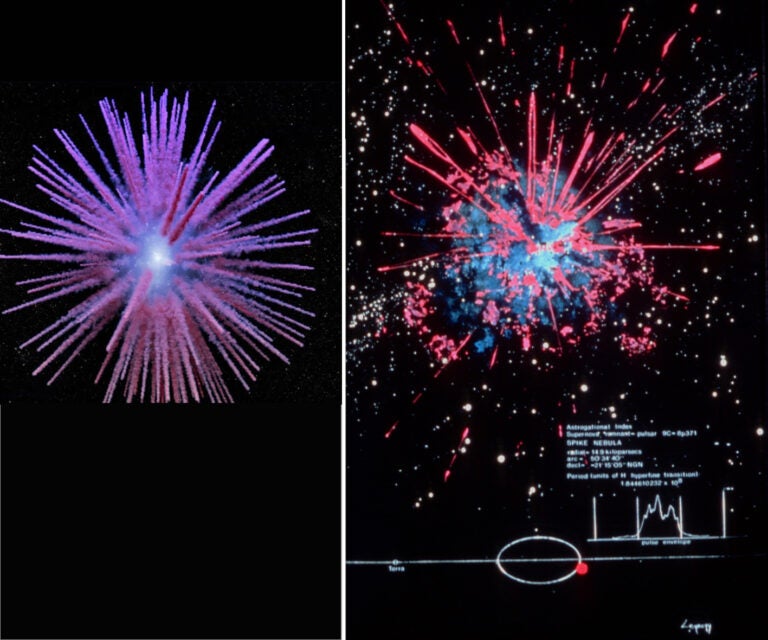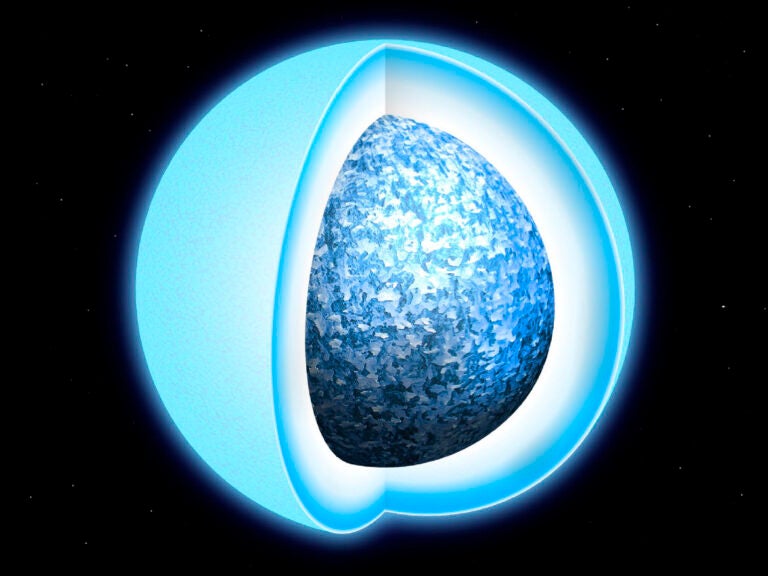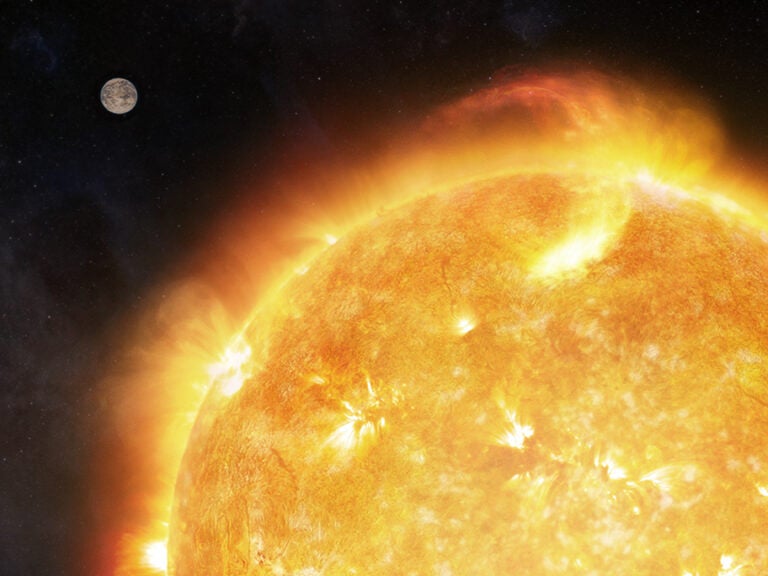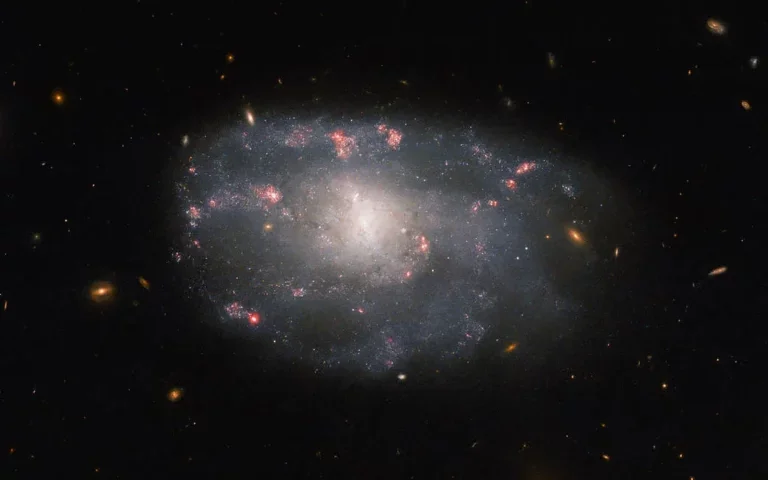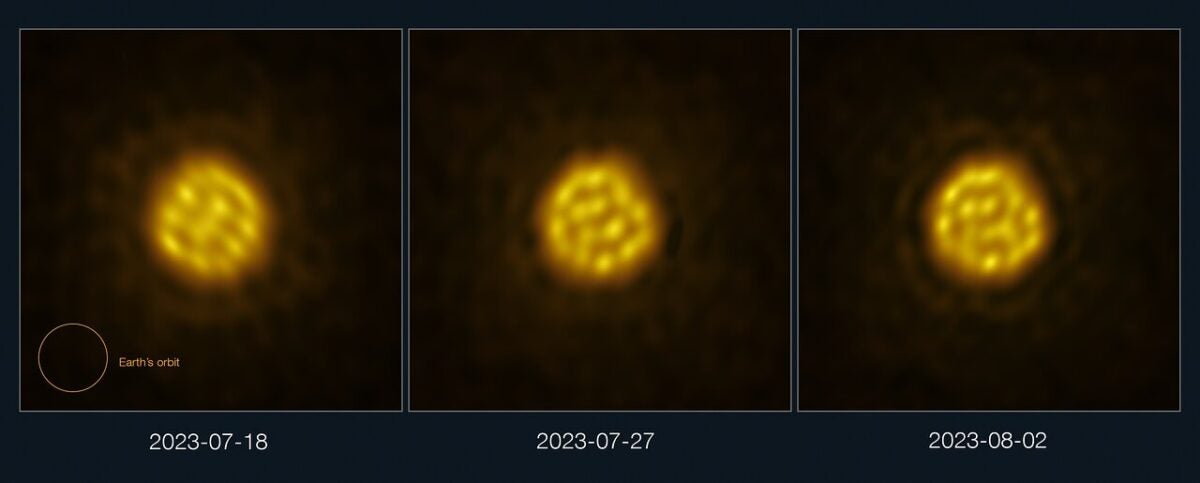
The stars in the sky are so distant that they typically appear as pinpricks even to our most powerful telescopes. Aside from the Sun, only a few nearby, bloated stars appear large enough to capture any features on their surface, however crude. New images released Sept. 11, however, capture one of the most detailed images ever of a star other than the Sun — and it’s one that previews the fate of our own solar system.
In research published in Nature, astronomers using the Atacama Large Millimeter/submillimeter Array (ALMA) in Chile capture of images of the star R Doradus that are so detailed, it’s possible to make out gas bubbles on its surface. Previously, this was only possible for the Sun.
Zooming in on R Doradus
A few factors led to the ability of ALMA to discern such fine detail. The star is only 180 light-years away. As a red giant, it’s both huge (350 times the diameter of the Sun) and relatively cool. And each of the bubbles on the surface about 75 times the size of the Sun.
But don’t let its huge size fool you. R Doradus’ mass is comparable to that of our Sun. When stars like the Sun exhaust their supply of hydrogen, the outer layers expand and they become a red giant star. This expansion vastly reduces the density of the star’s outer atmosphere, meaning that despite the size of R Doradus’ bubbles, they’re quite diffuse, several . In fact, both the our own Earth’s atmosphere is more dense than the outer layers of R Doradus.
R Doradus is classified as an asymptotic giant branch, or AGB star, whose core is no longer undergoing fusion, but where helium and hydrogen are still fusing in “shells” around the inert carbon-oxygen core.
“We chose R Doradus because it is one of the closest — possibly the closest — of the AGB stars,” study author Wouter Vlemmings of the Chalmers University of Technology in Sweden says. “It is also the largest star [after the Sun] in angular size on the sky.” So, the researchers hoped it could yield the level of detail they wanted.
A peek into the Sun’s future
The images are astounding — and Vlemmings says they closely match predictions of what such a red giant star should look like. That means our predictions for the path our Sun might take on its death spiral in a few billion years are likely correct, and R Doradus offers a bit of a preview.
So, how long does R Doradus have left? Vlemmings says it’s hard to say, but “the typical length of this stellar phase is of the order of a million years. So it will still have a few hundred thousand years to go.”
The team is now planning followup observations on the star, hoping to gain more insight on how gas in the atmosphere behaves. They also want to study similar stars for flares or hotspots to better understand how convection (the transfer of heat outward) might work on the surface.
For most of these future observations, they’ll still need ALMA. The array of radio telescopes doesn’t form traditional images, as one might see peering through a telescope. Instead, the 66 receivers work in tandem to gradually build one huge observation of an object at wavelengths longer than those of visible light.
This means that ALMA can be “tuned” to gather details on objects too bright to dissect in visible or infrared light. “[These] stars are actually too bright for JWST, meaning that they would be very hard to study without saturating the telescope,” Vlemming says, though he adds that the space telescope could be used to inspect the region around the star for gas outflows.
So, while JWST is typically used to peer deep into the universe’s past, in this case researchers are using ALMA for a glimpse of its future.





